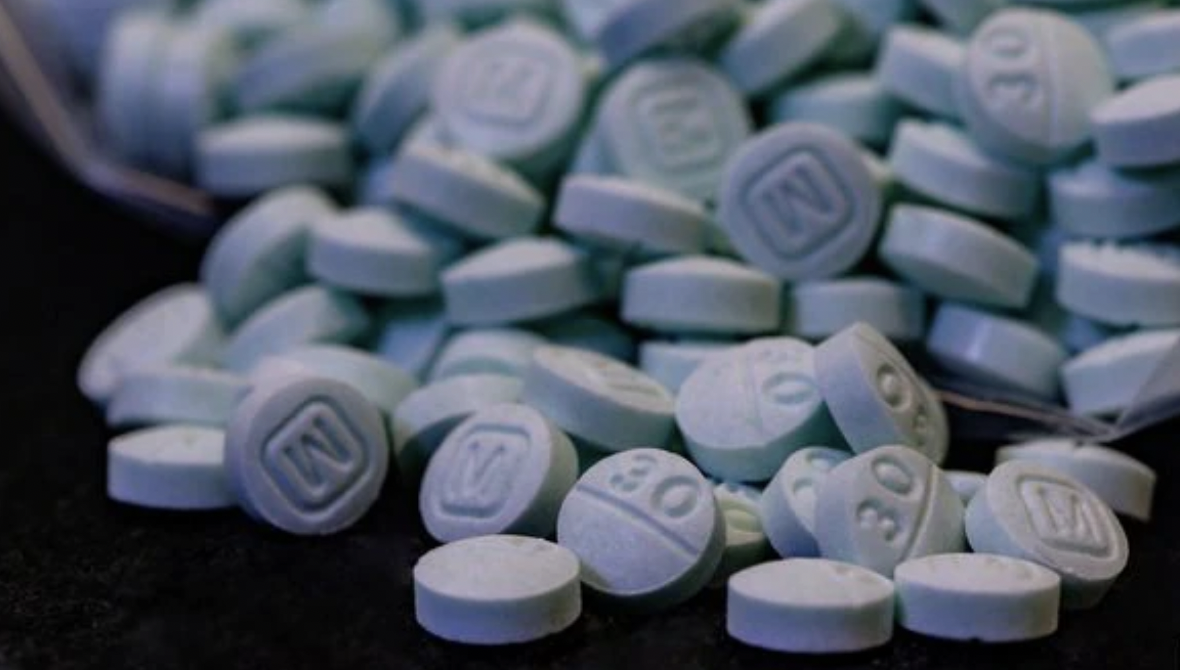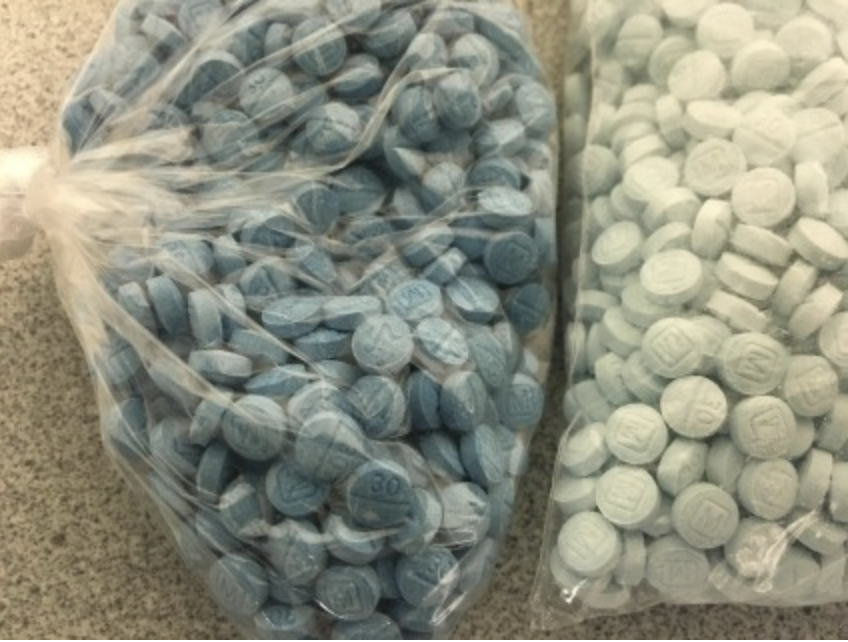What does fentanyl look like? Well, the truth is that fentanyl is sometimes hard to spot. The powerful drug can be mixed in with many different types of drugs, and often is.
Usually, dealers will mix fentanyl with cocaine, methamphetamine, or heroin. Doing so increases the drug’s potency for the user and lines the dealer’s pockets with boosted profits.
The Drug Enforcement Administration (DEA) stated in 2018 that there has been a 112% increase in various drugs being laced with fentanyl. Without an actual fentanyl testing kit, there is no way for humans to detect if fentanyl is inside a street drug or not.
What Does Fentanyl Look Like?
Fentanyl often comes in the form of fake pills. The pills are masked to look like prescription medications, but they are not. Some ways you can tell that a pill has fentanyl inside is by comparison, which is difficult. The pills are often green, blue, or have a pale tint. The fentanyl pills look similar to prescription pills with designated markings.

What Does Fentanyl Taste Like?
So what does fentanyl taste like? Well, many can tell you from personal experience that it tastes absolutely horrible. It is incredibly bitter, and it leaves an unpleasant aftertaste in your mouth. However, some forms of fentanyl are said to be sweet. It ultimately depends on the mixture of fentanyl and the formula used to make it.What Are the Signs Of Fentanyl Usage?
There are signs that you can see in fentanyl-dependent people. Here are some examples below:- Constantly sleeping.
- The person can sleep while standing up.
- Continuously nodding out since the drug is causing them to do it.
- Self-isolation.
- Severe weight loss.
- Shallow breathing patterns.
- Very dizzy.
- Feeling confused.
- Hindered motor abilities such as difficulty walking.
What To Do If You Suspect Fentanyl Use
If you suspect your loved one is using fentanyl, it is time to take action to try to get them help.
Intervention
Before an intervention, be sure you have enough evidence to back up that your loved one is struggling with fentanyl dependence. Conduct fentanyl research so you know all the symptoms and possibly fatal outcomes of prolonged use.
Approach him or her calmly and express how concerned you are. Talk about how important they are to you and the rest of their family and friends.
To enhance your argument, show them a picture of before they became fentanyl-dependent. Discuss their personality traits before and after they got hooked on the drug. Describe their accomplishments and their future aspirations and how everything has stopped for them since they started using fentanyl.
Encourage Them To Seek Treatment
The first step for any drug-dependent person to do before seeking treatment is to admit that they have an addiction problem. You cannot force someone to seek rehab unless you seek involuntary commitment, but you can encourage them.
Take a look at our inpatient, outpatient, and partial hospitalization program pages for more information on our therapeutic procedures to treat alcohol and drug-dependent patients. Arm yourself with the knowledge you need to encourage your loved ones to seek rehabilitative treatment to turn their life around for the better.
If your loved one declines the treatment offer, give it another 4-7 days before you try again. Of course, you do not want to pressure them every day about it. However, the sooner you can bring up the subject again, the higher the possibility they may seek the help they need.
If your loved one lives with you and is currently using fentanyl, it’s critical that you seek help.
Enlisting the help of community professionals will help you is important. You do not want to go through this alone.
Call Cornerstone Healing Center today if you have a loved one who needs help for a fentanyl addiction. We can be reached at (800) 643-2108
Sources
[1] 2018 DEA Report






